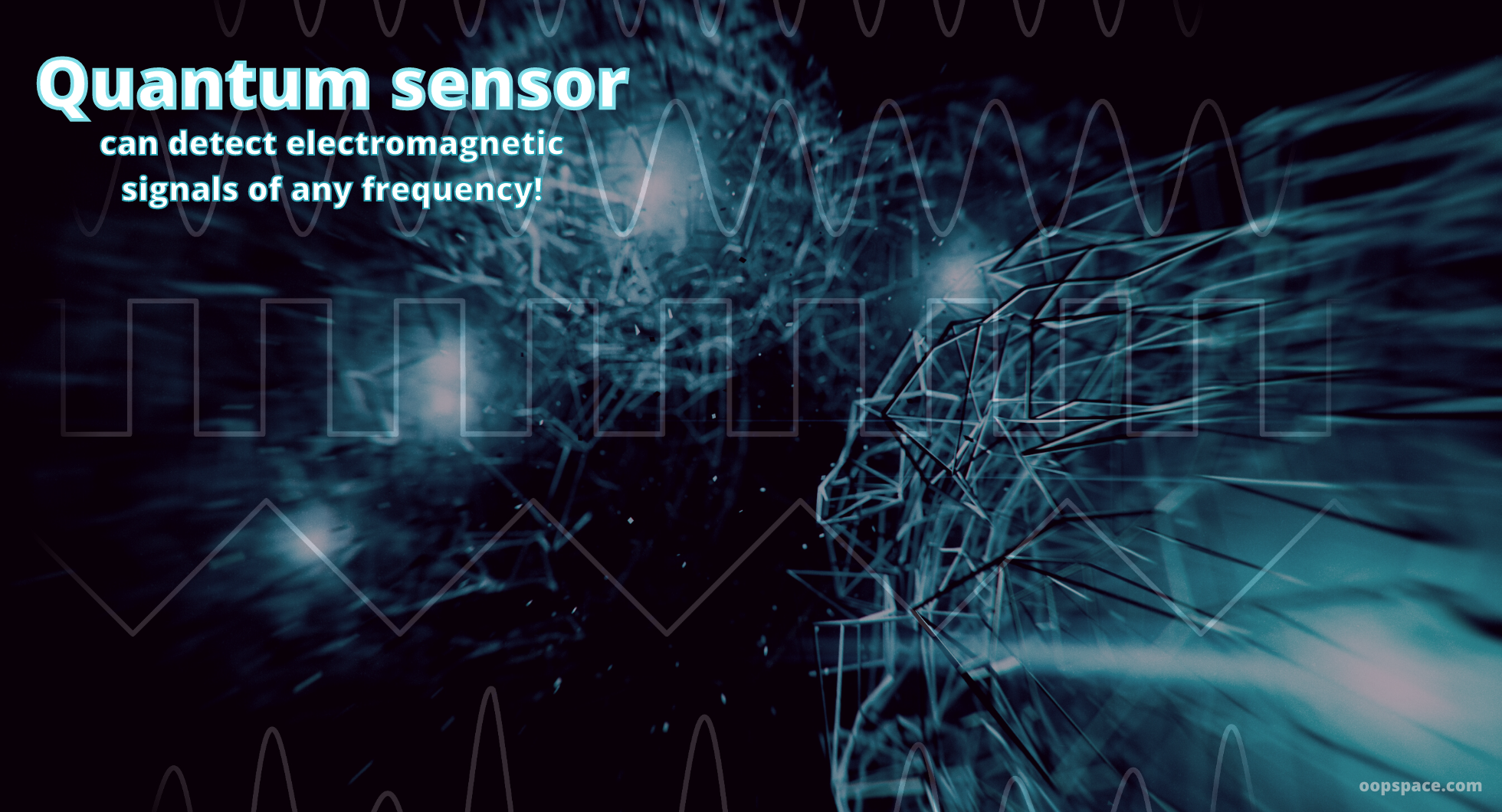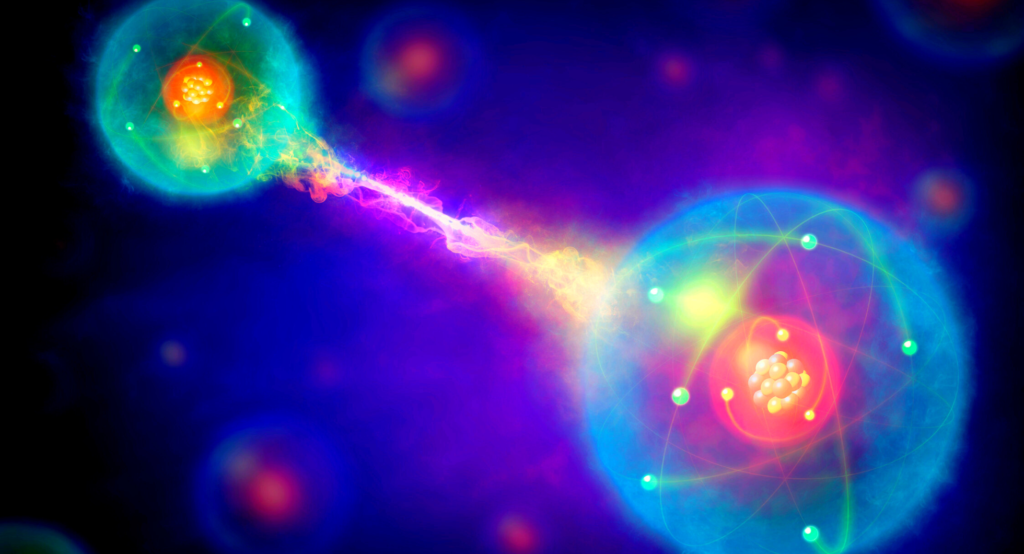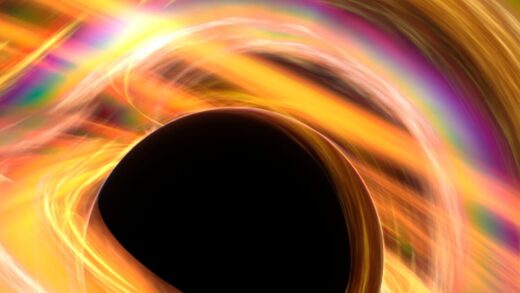Quantum sensor can detect electromagnetic signals of any frequency

Researchers have now developed a method to enable quantum sensors to detect any arbitrary frequency, with no loss of their ability to measure nanometer-scale features. The new method, by graduate student Guoqing Wang, professor of nuclear science and engineering and of physics Paola Cappellaro, and four others at MIT and Lincoln Laboratory, is described in the journal Physical Review X. The team has already applied for patent protection.
Precision measurements in materials science and fundamental physics have been made possible by quantum sensors, which can detect the smallest fluctuations in magnetic or electrical fields. However, the usefulness of these sensors has been limited by their inability to detect all of these fields’ frequencies.
The scientists say there are various types of quantum sensors. They are essentially systems where some of the particles are in such a delicately balanced condition that even minute changes in the fields they are exposed to can have an impact on them. The amount of research employing these sensors has increased significantly. They can appear as neutral atoms, trapped ions, or solid-state spins.
For instance, physicists use them to characterize practical systems like experimental quantum memory or computation devices, while other researchers utilize them to study exotic states of matter such as so-called time crystals and topological phases. However, many other interesting phenomena have a considerably wider frequency range than what can be detected by current quantum sensors.
“Quantum mixer” and demonstration of successful detection of a signal

The new device the scientists developed, which they refer to as a quantum mixer, uses a microwave beam to inject a second frequency into the detector. This converts the frequency of the field being studied into a different frequency – the difference between the original frequency and that of the added signal – which is tuned to the specific frequency that the detector is most sensitive to. This simple process enables the detector to home in on any desired frequency at all, with no loss in the nanoscale spatial resolution of the sensor.
The researchers successfully demonstrated the detection of a signal with a frequency of 150 megahertz using a qubit detector with a frequency of 2.2 gigahertz in their experiments using a particular device based on an array of nitrogen-vacancy centers in diamond, a widely used quantum sensing system. This detection would not have been possible without the use of a quantum multiplexer. After developing a theoretical framework based on Floquet theory, they conducted extensive investigations of the process by putting its numerical predictions to the test in a series of experiments.
While their tests used this specific system, Wang says that the same principle can also be applied to any kind of sensors or quantum devices. The system would be self-contained, with the detector and the source of the second frequency all packaged in a single device.
Recommended: Changes brought by quantum physics
Further application of the system
Wang further added that that system could be used, for example, to characterize in detail the performance of a microwave antenna. He said, “It can characterize the distribution of the field [generated by the antenna] with nanoscale resolution, so it’s very promising in that direction”.
It is feasible to modify the frequency sensitivity of some quantum sensors in other ways, but doing so necessitates using bulky apparatus and powerful magnetic fields, which obliterate the small details and prevent reaching the new system’s extremely high resolution. Today, in such system, we need to use a strong magnetic field to tune the sensor, but that magnetic field can potentially break the quantum material properties, which can influence the phenomena that you want to measure, Wand says.
Cappellaro claims that because the method may make a variety of electrical or magnetic activity frequencies at the level of a single cell accessible, it may lead to novel biological applications. She claims that using present quantum sensing technologies, it would be extremely difficult to obtain useful resolution of such signals. This technique may allow for the detection of output signals from a single neuron in response to a stimulus, for example. These signals are normally difficult to separate because they are frequently accompanied by a lot of noise.
The system could also be used to characterize in detail the behavior of exotic materials such as 2D materials that are being intensely studied for their electromagnetic, optical, and physical properties.
Possibility of Expanding the System
The team is currently investigating the possibility of expanding the system to probe multiple frequencies simultaneously as opposed to the current system’s single frequency targeting. At Lincoln Laboratory, where some members of the research team are based, they will also keep defining the system’s capabilities using more potent quantum sensing equipment.
Yi-Xiang Liu from MIT and Jennifer Schloss, Scott Alsid, and Danielle Braje from Lincoln Laboratory were on the team. The Defense Advanced Research Projects Agency (DARPA) and Q-Diamond both provided funding for the project.
Source: Agencies
Auto Amazon Links: No products found.


